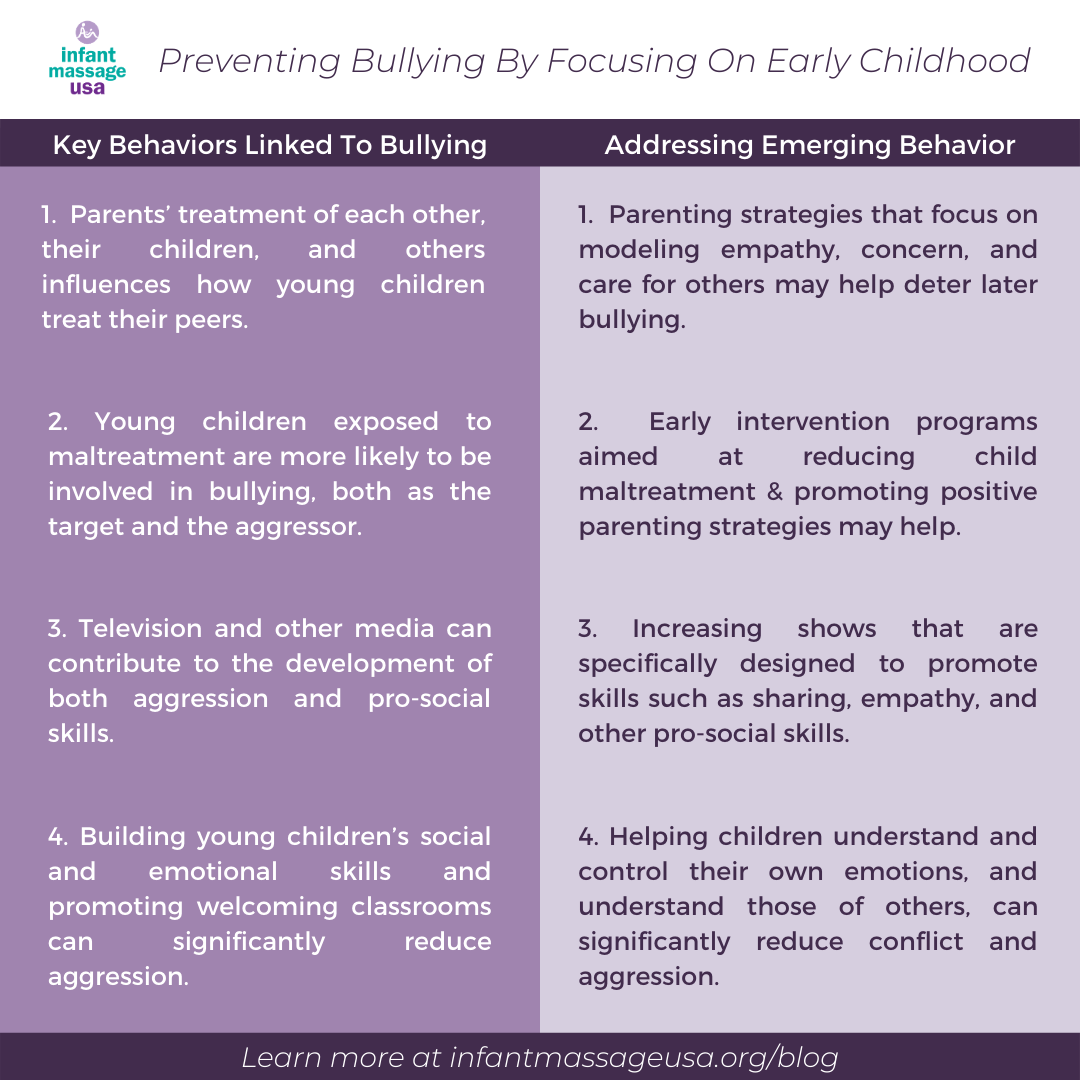Early Childhood and Bullying Prevention
Identifying Bullying In Infancy
We don’t typically think about the development of bullying before children start school and in fact the CDC’s definition of bullying includes that bullying is between ‘school aged youth’. However, research published in 2018 shows us that even in infancy we can begin to distinguish between leaders and bullies.
In the study, the infants saw 3 people interact with someone who was either a leader (with respect-based power) or a bully (with fear-based power). The leader/bully character gave an order to the person, who obeyed, then the leader/bully character left the scene and the person either continued to obey or stopped.
The outcome was that the infants expected the person to continue to obey the leader’s order after she left the scene, but they expected the protagonists to obey the bully’s order only when she remained present. The study concludes that by 21 months, infants can already distinguish between respect-based and fear-based power relations.
In previous research on infants’ sensitivity to power imbalances, results indicate that in the first year of life infants’ representation of the social landscape does include power differences among individuals and by the second year, if not before, infants also expect them both to endure over time and to extend across a range of situations.
Preventing Bullying By Focusing On Early Childhood
In 2015, Child Trends (a leading research organization) and National Association for the Education of Young Children (NAEYC) documented the current understandings of the roots of bullying in early childhood and found 4 key factors linked to bullying behaviors as well as promising and evidence-based programs that help address emerging behavior.
Key Factors Linked To Bullying Behaviors
1. Parents’ treatment of each other, their children, and others influences how young children treat their peers.
2. Young children exposed to maltreatment are more likely to be involved in bullying, both as the target and the aggressor.
3. Television and other media can contribute to the development of both aggression and pro-social skills.
4. Building young children’s social and emotional skills and promoting welcoming classrooms can significantly reduce aggression.
Addressing Emerging Behavior
1. Parenting strategies that focus on modeling empathy, concern, and care for others may help deter later bullying
2. Early intervention programs aimed at reducing child maltreatment & promoting positive parenting strategies may help.
3. Increasing shows that are specifically designed to promote skills such as sharing, empathy, and other pro-social skills.
4. Helping children understand and control their own emotions, and understand those of others, can significantly reduce conflict and aggression.
Research showing bullying can be identified in infancy coupled with the concept that bullying behaviors may be a part of a developmental progression helps us understand that developing social skills/behavior and emotional regulation skills are key to preventing bullying in the future.
Feel free to share this image!
References:
https://www.childtrends.org/blog/to-prevent-bullying-focus-on-early-childhood
Margoni F, Baillargeon R, Surian L. Infants distinguish between leaders and bullies. Proc Natl Acad Sci U S A. 2018;115(38):E8835-E8843. doi:10.1073/pnas.1801677115
Additional Resources:
https://www.verywellfamily.com/bullying-statistics-to-know-4589438
https://www.pacer.org/bullying/resources/stats.asp
https://www.naeyc.org/resources/blog/bullying-early-childhood


